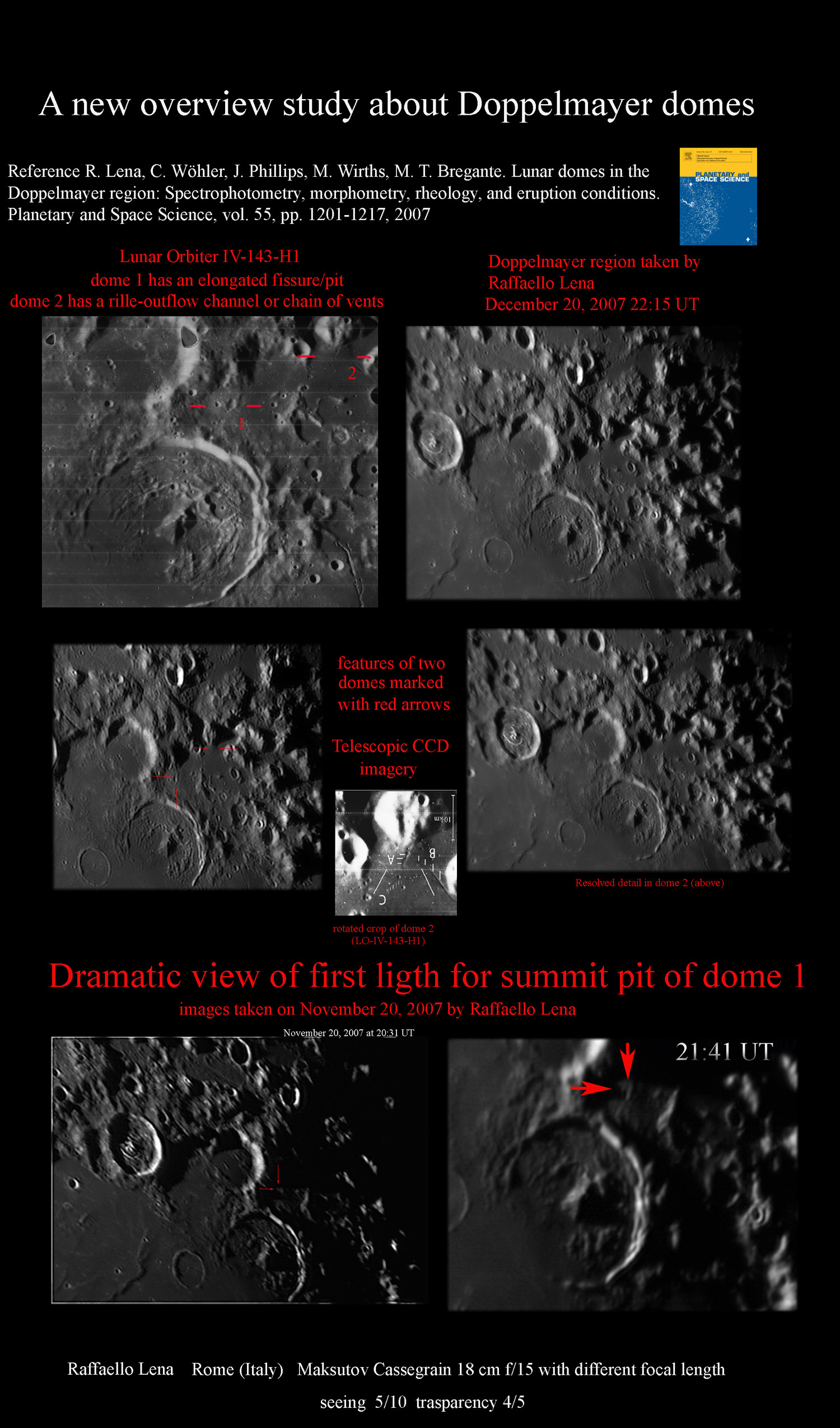Difference between revisions of "January 26, 2008"
| Line 3: | Line 3: | ||
<!-- ws:start:WikiTextHeadingRule:0:<h1> --> | <!-- ws:start:WikiTextHeadingRule:0:<h1> --> | ||
[http://the-moon.wikispaces.com/space/showimage/doppelmayerstudyrescaled.jpg [[File:doppelmayerstudyrescaled.jpg]]]<!-- ws:end:WikiTextLocalImageRule:17 --><br /> | [http://the-moon.wikispaces.com/space/showimage/doppelmayerstudyrescaled.jpg [[File:doppelmayerstudyrescaled.jpg]]]<!-- ws:end:WikiTextLocalImageRule:17 --><br /> | ||
| − | <em>image by [http://www.glrgroup.org/ GLR]</em> | + | <em>image by [http://www.glrgroup.org/ GLR]</em><br /> |
<br /> | <br /> | ||
The [http://www.glrgroup.org/ GLR] is a group of dedicated amateurs interested in the study of [http://www.lpod.org/?m=20060327 domes] and other lunar surface features visible from Earth. Our work often finds its way into scientific journals. This poster summarizes our study of two domes near [http://the-moon.wikispaces.com/Doppelmayer Doppelmayer], which were examined in a recent [http://adsabs.harvard.edu/abs/2007P%26SS...55.1201L paper] published in [http://www.elsevier.com/wps/find/journaldescription.cws_home/200/description#description Planetary and Space Science], by the GLR group. Due to the fact that Dome 1 is located right on the boundary between hummocky terrain and a mare pond, lateral mixing of mare and highland soils is a much more natural explanation for the observed spectral signature. Dome 1 appears to be smooth with a shallow and elongated fissure on the summit. For dome 2, we found that it is a typical effusive mare dome, given its spectral and morphometric properties and inferred rheologic parameters. In the [http://the-moon.wikispaces.com/Lunar+Orbiter Lunar Orbiter] image the dome appears to have a smooth surface with an out flow channel or chain of vents and linear rilles. An estimation of the dimensions of the feeder dikes suggest that their source regions were located below the lunar crust. In a new and recent image it is possible see the resolved domes in Doppelmayer (see attachment) and the summit elongated fissure for dome 1 but also the central elusive rille for dome 2. It is compared with Lunar Orbiter frame.<br /> | The [http://www.glrgroup.org/ GLR] is a group of dedicated amateurs interested in the study of [http://www.lpod.org/?m=20060327 domes] and other lunar surface features visible from Earth. Our work often finds its way into scientific journals. This poster summarizes our study of two domes near [http://the-moon.wikispaces.com/Doppelmayer Doppelmayer], which were examined in a recent [http://adsabs.harvard.edu/abs/2007P%26SS...55.1201L paper] published in [http://www.elsevier.com/wps/find/journaldescription.cws_home/200/description#description Planetary and Space Science], by the GLR group. Due to the fact that Dome 1 is located right on the boundary between hummocky terrain and a mare pond, lateral mixing of mare and highland soils is a much more natural explanation for the observed spectral signature. Dome 1 appears to be smooth with a shallow and elongated fissure on the summit. For dome 2, we found that it is a typical effusive mare dome, given its spectral and morphometric properties and inferred rheologic parameters. In the [http://the-moon.wikispaces.com/Lunar+Orbiter Lunar Orbiter] image the dome appears to have a smooth surface with an out flow channel or chain of vents and linear rilles. An estimation of the dimensions of the feeder dikes suggest that their source regions were located below the lunar crust. In a new and recent image it is possible see the resolved domes in Doppelmayer (see attachment) and the summit elongated fissure for dome 1 but also the central elusive rille for dome 2. It is compared with Lunar Orbiter frame.<br /> | ||
Revision as of 17:28, 7 February 2015
Dome Students

image by GLR
The GLR is a group of dedicated amateurs interested in the study of domes and other lunar surface features visible from Earth. Our work often finds its way into scientific journals. This poster summarizes our study of two domes near Doppelmayer, which were examined in a recent paper published in Planetary and Space Science, by the GLR group. Due to the fact that Dome 1 is located right on the boundary between hummocky terrain and a mare pond, lateral mixing of mare and highland soils is a much more natural explanation for the observed spectral signature. Dome 1 appears to be smooth with a shallow and elongated fissure on the summit. For dome 2, we found that it is a typical effusive mare dome, given its spectral and morphometric properties and inferred rheologic parameters. In the Lunar Orbiter image the dome appears to have a smooth surface with an out flow channel or chain of vents and linear rilles. An estimation of the dimensions of the feeder dikes suggest that their source regions were located below the lunar crust. In a new and recent image it is possible see the resolved domes in Doppelmayer (see attachment) and the summit elongated fissure for dome 1 but also the central elusive rille for dome 2. It is compared with Lunar Orbiter frame.
Image and commentary submitted by Raffaello Lena
Technical Details
- Photos taken by Raffaello Lena (GLR group) with a Maksutov Cassegrain 18 cm f/15 and Lumenera LU 075 M - Rome (Italy). Additional details on image.
Related Links
- Rükl plate 52
- R. Lena, C. Wöhler, J. Phillips, M. Wirths, M. T. Bregante. Lunar domes in the Doppelmayer region: Spectrophotometry, morphometry, rheology, and eruption conditions. Planetary and Space Science, vol. 55, pp. 1201-1217, 2007. This paper also available as a PDF download (1.3 MB)
- Selenology Today a free on-line magazine of lunar studies published by the GLR
- Earlier LPOD: Doppelmayer Surprises
Yesterday's LPOD: Sky Painting
Tomorrow's LPOD: Galileo's Moon?
COMMENTS?
Register, Log in, and join in the comments.



